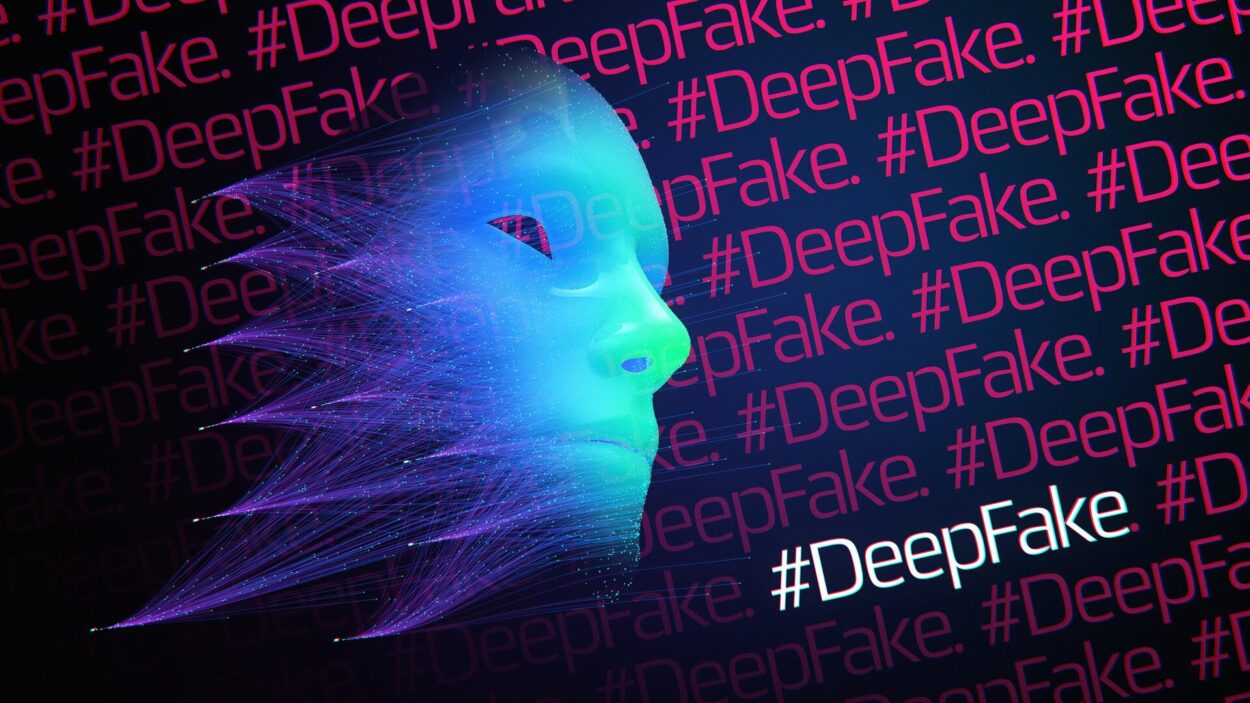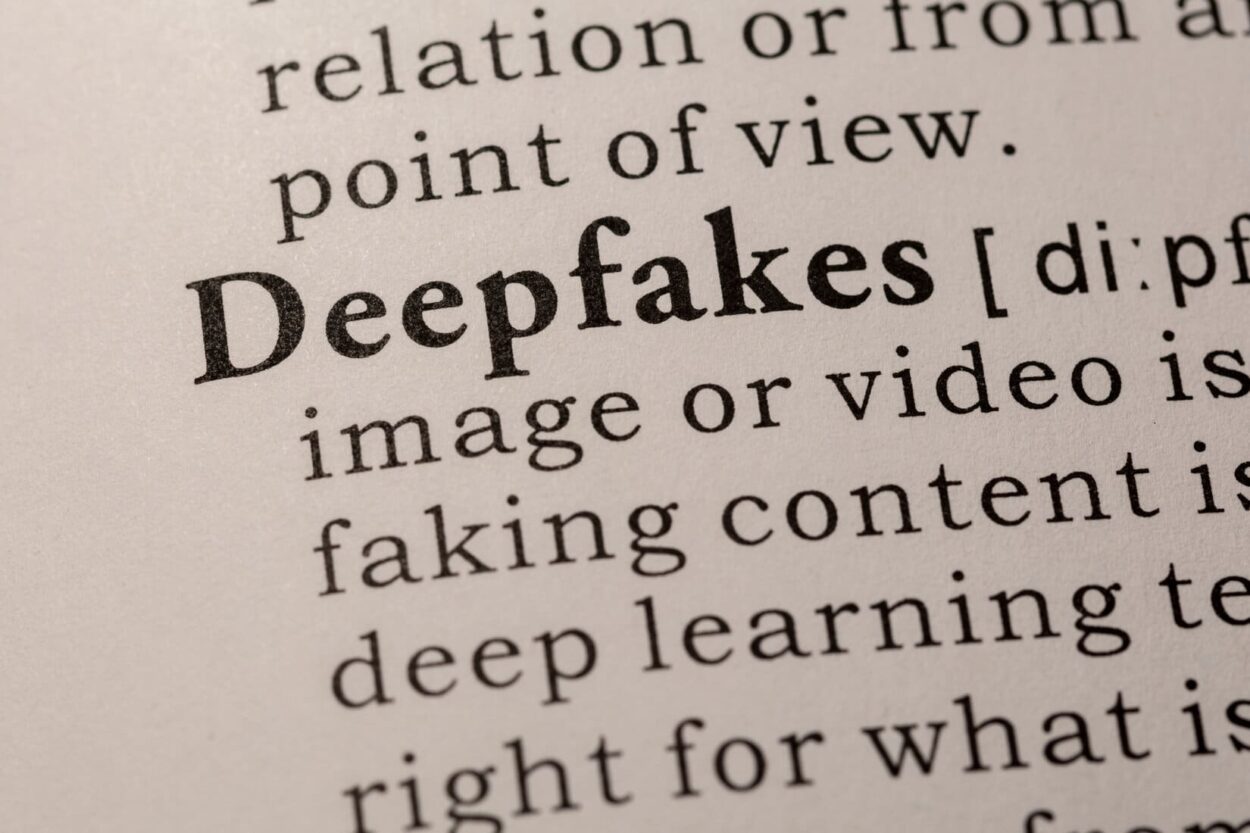Jasmine Birtles
Your money-making expert. Financial journalist, TV and radio personality.


We’re all used to looking out for scams, but do you know how to spot a deepfake scam?
This latest form of scam can be much harder to spot and is something we should all be aware of to protect ourselves from tech-savvy fraudsters.

The term deepfake is typically used to refer to a video that has been edited using an algorithm to replace the person in the original video with someone else (especially a public figure) in a way that makes the video look authentic.
You might even have had a go yourself! There’s an app called Reface that lets you put YOUR face (or, actually, anyone’s you have a photo of) onto famous film clips. It blends the photo with the moving image, and can be incredibly convincing.
Improvements in technology make deepfakes easier to create and harder to detect, which sadly means more will keep appearing.
The number of scams has also increased hugely since the coronavirus pandemic. In fact, in June Citizens Advice reported that 36 percent of UK adults had already been the target of a scam since the first lockdown began.
Vulnerable people were more likely to be targeted with 54 percent of those who had lost their personal income being targeted.
Scammers like to prey on vulnerable individuals because they see them as easy targets. Currently, either due to their health, employment or financial status, more people are viewed as vulnerable. Not being able to see family and friends is also opening people up to scams as they are less likely to show someone else a potential scam before falling for it. In person, we’re more likely to mention something we’ve seen that we’re not sure about – but if we’re only chatting via telephone, text, or Zoom, conversations are less likely to move onto such subjects.
This means scammers have a larger pool to target, so we all need to be more vigilant and keep an eye out for ourselves and our loved ones.
Here are some common examples of deepfake scams.
These scammers will target lonely singles looking for love. Many have found dating apps a lifeline during lockdown and have met their partners online while you can’t meet in person. But, not everyone’s intentions are so genuine.
Deepfakes can use pictures and videos to ‘prove’ they’re the person they’re claiming to be.
Signs they might not be real include asking you to send them money and having personal details or anecdotes that don’t quite add up. For example – saying they left school 10 years ago, then talking about being in the same job for 15 years.
This is a particular concern to parents of teenagers, as criminals may use deepfakes to groom children.
Most scams have a financial element to them, but some are more financially-focused than others.
A common examples of financial scams is when you’re offered a tax refund. The scammer will pretend to be from HMRC and either claim you are owed a large tax rebate or that you owe HMRC a lot of money.
They will then ask you to hand over personal details, including your bank account. They may even get you to transfer them money.
Another popular choice from scammers is to pose as your bank. With banking video chat on the rise, it’s easier for scammers to set up video calls and pretend to be someone else with deepfake tech to pose as your bank.
With unemployment levels rising this has become an even bigger issue.
Financial fraud campaigner Take Five warns of criminals advertising fake jobs and in some cases even holding ‘interviews’.
They may request upfront fees and/or personal information for background checks. While others will offer CV writing services for roles that don’t exist. With the rise of deepfake video, it’s much easier to pretend an interview is real, and make it look like you’ve really got a new job (when in fact they’re using your data for nefarious purposes).

Scams can take all shapes and forms. Here are some more examples to look out for.
For example a person posing as a medical professional online could sell you a fake Covid-19 vaccine. Sadly this has already happened. A man has been charged after getting a 92 year-old women to pay £160 for a fake vaccine and injecting her with a mystery substance. As medical tech now includes video (telehealth), sales people or scammers can use deepfake to come across as more professional and sell the idea of their ‘medical miracle’ with ‘video evidence’.
There’s been worrying developments of people using deepfakes as evidence in legal matters.
It’s not just about people posing as others that use deepfake photos. Someone could take your photo to make it look like you’ve done something when you haven’t! Last year, a family lawyer revealed how deepfake audio was used in a custody battle to try and portray a father as threatening.
Deepfakes may target you at work to try and get large sums of money or data from your employer.
In 2019, a scammer impersonated the CEO of a large energy company and demanded a transfer of around £200,000.
Spotting deepfakes gets harder as technology continues to improve. Poor-quality deepfakes are relatively easy to spot if you know what to look out for!
The lip synching might be bad, or the skin tone patchy. There can be flickering around the edges of transposed faces. Smaller details, like hair, are particularly hard for deepfakes to render well, especially where strands are visible on the fringe. Badly rendered jewellery and teeth can also be a giveaway, as well as strange lighting effects, such as inconsistent illumination and reflections on the iris.
US researchers discovered in 2018 that deepfakes don’t blink normally. Although, since this was discovered, the technology has improved and now this distinction is harder to spot.
You should also apply all the checks you would apply to an ordinary scam when trying to spot a deepfake.
Things that might indicate something is a scam include:
There’s more information on avoiding specific coronavirus-related scams here.
If you’re in any doubt whether something is a scam or not you should always report it. This goes for deepfakes or ordinary scams.
The best place to report scams is Action Fraud – the UK’s national reporting centre for fraud and cybercrime. You should contact them if you have been scammed, defrauded or experienced cyber crime in England, Wales and Northern Ireland.
The service is run by the City of London Police working alongside the National Fraud Intelligence Bureau (NFIB) who are responsible for assessment of the reports and to ensure that your fraud reports reach the right place. The City of London Police is the national policing lead for economic crime.
You can report a scam using their online reporting service any time of the day or night. You can also contact the Action Fraud contact centre via phone call on 0300 123 2040.
When you report a scam to Action Fraud you will receive a police crime reference number. Reports taken are passed to the National Fraud Intelligence Bureau. Action Fraud does not investigate the cases and cannot advise you on the progress of a case.
You may also want to report the deepfake to the company or organisation the perpetrator is claiming to represent. This way they can alert other customers so they don’t fall victim to the scam too.
If they contacted you via social media or email, the company may also be able to block them from the site to prevent them from doing the same thing to someone else.
Want to know how to avoid other types of scam? Read these next!

Very interesting article.